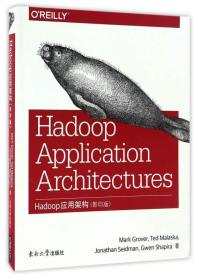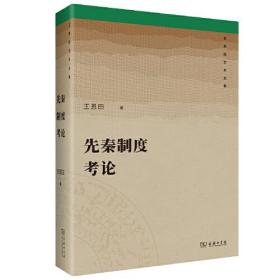
Hadoop应用架构(影印版 英文版)
¥ 19.9 2.2折 ¥ 89 全新
仅1件
河北保定
认证卖家担保交易快速发货售后保障
作者[美]Mark、Grover、Ted、Malaska、Jonathan 著
出版社东南大学出版社
出版时间2017-02
版次1
装帧平装
货号9787564170011
上书时间2024-11-19
- 最新上架
商品详情
- 品相描述:全新
图书标准信息
- 作者 [美]Mark、Grover、Ted、Malaska、Jonathan 著
- 出版社 东南大学出版社
- 出版时间 2017-02
- 版次 1
- ISBN 9787564170011
- 定价 89.00元
- 装帧 平装
- 开本 16开
- 纸张 胶版纸
- 页数 371页
- 字数 490千字
- 正文语种 英语
- 【内容简介】
-
在使用Apache Hadoop设计端到端数据管理解决方案时获得专家级指导。当其他很多渠道还停留在解释Hadoop生态系统中该如何使用各种纷繁复杂的组件时,这本专注实践的书已带领你从架构的整体角度思考,它对于你的特别应用场景而言是必不可少的,将所有组件紧密结合在一起,形成完整有针对性的应用程序。
为了增强学习效果,《Hadoop应用架构(影印版 英文版)》第二部分提供了各种详细的架构案例.涵盖部分常见的Hadoop应用场景。
无论你是在设计一个新的Hadoop应用还是正计划将Hadoop整合到现有的数据基础架构中,《Hadoop应用架构(影印版 英文版)》都将在这整个过程中提供技巧性的指导。
使用Hadoop存放数据和建模数据时需要考虑的要素 在系统中导入数据和从系统中导出数据的实践指导 数据处理的框架,包括MapReduce、Spark和Hive 常用Hadoop处理模式,例如移除重复记录和使用窗口分析 Giraph,GraphX以及其他Hadoop上的大图片处理工具 使用工作流协作和调度工具,例如Apache Oozie 使用Apache Storm、Apache Spark Streaming和Apache Flume处理准实时数据流 点击流分析、欺诈防止和数据仓库的架构实例 - 【作者简介】
-
markgrover,是apachebigtop的代码贡献者以及apachesentry的项目管理委员会成员和代码贡献者。tedmalaska,是cloudera的不错应用架构师,帮助客户使用hadoop及其生态系统。jonathanseidman,是cloudera的应用架构师,帮助合作伙伴把他们的解决方案集成到cloudera的软件栈中。gwenshapira,是cloudera的应用架构师,在为客户设计可扩展的数据架构方面有15年的经验。 - 【目录】
-
Foreword
Preface
Part Ⅰ. Architectural Considerations for Hadoop Applications
1. Data Modeling in Hadoop
Data Storage Options
Standard File Formats
Hadoop File Types
Serialization Formats
Columnar Formats
Compression
HDFS Schema Design
Location of HDFS Files
Advanced HDFS Schema Design
HDFS Schema Design Summary
HBase Schema Design
Row Key
Timestamp
Hops
Tables and Regions
Using Columns
Using Column Families
Time-to-Live
Managing Metadata
What Is Metadata?
Why Care About Metadata?
Where to Store Metadata?
Examples of Managing Metadata
Limitations of the Hive Metastore and HCatalog
Other Ways of Storing Metadata
Conclusion
2. Data Movement
Data Ingestion Considerations
Timeliness of Data Ingestion
Incremental Updates
Access Patterns
Original Source System and Data Structure
Transformations
Network Bottlenecks
Network Security
Push or Pull
Failure Handling
Level of Complexity
Data Ingestion Options
File Transfers
Considerations for File Transfers versus Other Ingest Methods
Sqoop: Batch Transfer Between Hadoop and Relational Databases
Flume: Event-Based Data Collection and Processing
Kafka
Data Extraction
Conclusion
3. Processing Data in Hadoop
MapReduce
MapReduce Overview
Example for MapReduce
When to Use MapReduce
Spark
Spark Overview
Overview of Spark Components
Basic Spark Concepts
Benefits of Using Spark
Spark Example
When to Use Spark
Abstractions
Pig
Pig Example
When to Use Pig
Crunch
Crunch Example
When to Use Crunch
Cascading
Cascading Example
When to Use Cascading
Hive
Hive Overview
Example of Hive Code
When to Use Hive
Impala
Impala Overview
Speed-Oriented Design
Impala Example
When to Use Impala
Conclusion
4. Common Hadoop Processing Patterns
Pattern: Removing Duplicate Records by Primary Key
Data Generation for Deduplication Example
Code Example: Spark Deduplication in Scala
Code Example: Deduplication in SQL
Pattern: Windowing Analysis
Data Generation for Windowing Analysis Example
Code Example: Peaks and Valleys in Spark
Code Example: Peaks and Valleys in SQL
Pattern: Time Series Modifications
Use HBase and Versioning
Use HBase with a RowKey of RecordKey and StartTime
Use HDFS and Rewrite the Whole Table
Use Partitions on HDFS for Current and Historical Records
Data Generation for Time Series Example
Code Example: Time Series in Spark
Code Example: Time Series in SQL
Conclusion
5. Graph Processing on Hadoop
What Is a Graph?
What Is Graph Processing?
How Do You Process a Graph in a Distributed System?
The Bulk Synchronous Parallel Model
BSP by Example
Giraph
Read and Partition the Data
Batch Process the Graph with BSP
Write the Graph Back to Disk
Putting It All Together
When Should You Use Giraph?
GraphX
Just Another RDD
GraphX Pregel Interface
vprog0
sendMessage0
mergeMessage0
Which Tool to Use?
Conclusion
6. Orchestration
Why We Need Workflow Orchestration
The Limits of Scripting
The Enterprise Job Scheduler and Hadoop
Orchestration Frameworks in the Hadoop Ecosystem
Oozie Terminology
Oozie Overview
Oozie Workflow
Workflow Patterns
Point-to-Point Workflow
Fan- Out Workflow
Capture-and-Decide Workflow
Parameterizing Workflows
Classpath Definition
Scheduling Patterns
Frequency Scheduling
Time and Data Triggers
Executing Workflows
Conclusion
7. Near-Real-Time Processing with Hadoop
Stream Processing
Apache Storm
Storm High-Level Architecture
Storm Topologies
Tuples and Streams
Spouts and Bolts
Stream Groupings
Reliability of Storm Applications
Exactly-Once Processing
Fault Tolerance
Integrating Storm with HDFS
Integrating Storm with HBase
Storm Example: Simple Moving Average
Evaluating Storm
Trident
Trident Example: Simple Moving Average
Evaluating Trident
Spark Streaming
Overview of Spark Streaming
Spark Streaming Example: Simple Count
Spark Streaming Example: Multiple Inputs
Spark Streaming Example: Maintaining State
Spark Streaming Example: Windowing
Spark Streaming Example: Streaming versus ETL Code
Evaluating Spark Streaming
Flume Interceptors
Which Tool to Use?
Low-Latency Enrichment, Validation, Alerting, and Ingestion
NRT Counting, Rolling Averages, and Iterative Processing
Complex Data Pipelines
Conclusion
Part Ⅱ. Case Studies
8. Clickstream Analysis
Defining the Use Case
Using Hadoop for Clickstream Analysis
Design Overview
Storage
Ingestion
The Client Tier
The Collector Tier
Processing
Data Deduplication
Sessionization
Analyzing
Orchestration
Conclusion
9. Fraud Detection
Continuous Improvement
Taking Action
Architectural Requirements of Fraud Detection Systems
Introducing Our Use Case
High-Level Design
Client Architecture
Profile Storage and Retrieval
Caching
HBase Data Definition
Delivering Transaction Status: Approved or Denied?
Ingest
Path Between the Client and Flume
Near-Real-Time and Exploratory Analytics
Near-Real-Time Processing
Exploratory Analytics
What About Other Architectures?
Flume Interceptors
Kafka to Storm or Spark Streaming
External Business Rules Engine
Conclusion
10. Data Warehouse
Using Hadoop for Data Warehousing
Defining the Use Case
OLTP Schema
Data Warehouse: Introduction and Terminology
Data Warehousing with Hadoop
High-Level Design
Data Modeling and Storage
Ingestion
Data Processing and Access
Aggregations
Data Export
Orchestration
Conclusion
A. Joins in Impala
Index
点击展开
点击收起
— 没有更多了 —












以下为对购买帮助不大的评价